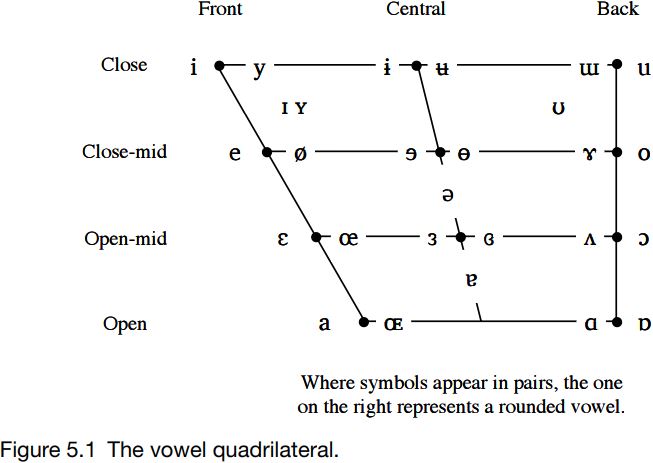

Grammar


Tenses


Present

Present Simple

Present Continuous

Present Perfect

Present Perfect Continuous


Past

Past Simple

Past Continuous

Past Perfect

Past Perfect Continuous


Future

Future Simple

Future Continuous

Future Perfect

Future Perfect Continuous


Parts Of Speech


Nouns

Countable and uncountable nouns

Verbal nouns

Singular and Plural nouns

Proper nouns

Nouns gender

Nouns definition

Concrete nouns

Abstract nouns

Common nouns

Collective nouns

Definition Of Nouns

Animate and Inanimate nouns

Nouns


Verbs

Stative and dynamic verbs

Finite and nonfinite verbs

To be verbs

Transitive and intransitive verbs

Auxiliary verbs

Modal verbs

Regular and irregular verbs

Action verbs

Verbs


Adverbs

Relative adverbs

Interrogative adverbs

Adverbs of time

Adverbs of place

Adverbs of reason

Adverbs of quantity

Adverbs of manner

Adverbs of frequency

Adverbs of affirmation

Adverbs


Adjectives

Quantitative adjective

Proper adjective

Possessive adjective

Numeral adjective

Interrogative adjective

Distributive adjective

Descriptive adjective

Demonstrative adjective


Pronouns

Subject pronoun

Relative pronoun

Reflexive pronoun

Reciprocal pronoun

Possessive pronoun

Personal pronoun

Interrogative pronoun

Indefinite pronoun

Emphatic pronoun

Distributive pronoun

Demonstrative pronoun

Pronouns


Pre Position


Preposition by function

Time preposition

Reason preposition

Possession preposition

Place preposition

Phrases preposition

Origin preposition

Measure preposition

Direction preposition

Contrast preposition

Agent preposition


Preposition by construction

Simple preposition

Phrase preposition

Double preposition

Compound preposition

prepositions


Conjunctions

Subordinating conjunction

Correlative conjunction

Coordinating conjunction

Conjunctive adverbs

conjunctions


Interjections

Express calling interjection

Phrases

Sentences


Grammar Rules

Passive and Active

Preference

Requests and offers

wishes

Be used to

Some and any

Could have done

Describing people

Giving advices

Possession

Comparative and superlative

Giving Reason

Making Suggestions

Apologizing

Forming questions

Since and for

Directions

Obligation

Adverbials

invitation

Articles

Imaginary condition

Zero conditional

First conditional

Second conditional

Third conditional

Reported speech

Demonstratives

Determiners


Linguistics

Phonetics

Phonology

Linguistics fields

Syntax

Morphology

Semantics

pragmatics

History

Writing

Grammar

Phonetics and Phonology

Semiotics


Reading Comprehension

Elementary

Intermediate

Advanced


Teaching Methods

Teaching Strategies

Assessment
Dimensions of vowel description
المؤلف:
Richard Ogden
المصدر:
An Introduction to English Phonetics
الجزء والصفحة:
59-5
20-6-2022
1584
Dimensions of vowel description

The three vowels we have just described form three corners of the IPA’s vowel quadrilateral. This represents, schematically, the vowel space: sounds articulated at the edge of or inside the box are vowels. The vowel space uses three dimensions for describing vowels: vowel height, frontness and backness, and lip posture (or rounding). If the tongue is raised any higher than the sounds along the [i]–[u] axis, then friction is generated, and so a fricative (i.e. a consonant sound) is produced. If the tongue is lowered or backed beyond the vowel [ɑ], then friction is also produced. The cardinal vowels take pre-determined positions in the quadrilateral; other vowels are fitted in the spaces in between.
Vowel height is represented on the vertical dimension: from close through close-mid, and open-mid to open, along a continuum. The horizontal dimension of the chart (front – central – back) represents the second aspect of vowel description: vowel frontness/backness. The points between the extremes are chosen because they are useful reference points. In theory there is an infinite number of points between the extremes on each dimension.
The third aspect of vowel description is lip posture. The lips can be held in a large number of postures. Here are a few: spread and close (as if smiling), spread and protruded (as if to make a rectangular box between the lips and teeth), compressed and protruded (as if to make a polite kiss on someone’s cheek), and open and rounded (as if to make a big O-shape). The IPA represents lip posture implicitly in symbols, with diacritics for deviations from what is implied.
There are two sets of cardinal vowels: the eight primary cardinal vowels [i e ε a ɑ ɔ o u] and the secondary cardinal vowels 
 . The primary cardinal vowels are, as the name suggests, the more important ones, because they represent the commonest types of vowel across the world’s languages. The secondary cardinal vowels are less common. They are the same as the primary cardinal vowels with respect to tongue posture, but they have reversed lip postures: for example, [y] has the same tongue position as [i], but the same lip posture as [u]; [ɯ] has the same tongue position as [u], but the same lip posture as [i].
. The primary cardinal vowels are, as the name suggests, the more important ones, because they represent the commonest types of vowel across the world’s languages. The secondary cardinal vowels are less common. They are the same as the primary cardinal vowels with respect to tongue posture, but they have reversed lip postures: for example, [y] has the same tongue position as [i], but the same lip posture as [u]; [ɯ] has the same tongue position as [u], but the same lip posture as [i].
 الاكثر قراءة في Phonetics
الاكثر قراءة في Phonetics
 اخر الاخبار
اخر الاخبار
اخبار العتبة العباسية المقدسة

الآخبار الصحية















 قسم الشؤون الفكرية يصدر كتاباً يوثق تاريخ السدانة في العتبة العباسية المقدسة
قسم الشؤون الفكرية يصدر كتاباً يوثق تاريخ السدانة في العتبة العباسية المقدسة "المهمة".. إصدار قصصي يوثّق القصص الفائزة في مسابقة فتوى الدفاع المقدسة للقصة القصيرة
"المهمة".. إصدار قصصي يوثّق القصص الفائزة في مسابقة فتوى الدفاع المقدسة للقصة القصيرة (نوافذ).. إصدار أدبي يوثق القصص الفائزة في مسابقة الإمام العسكري (عليه السلام)
(نوافذ).. إصدار أدبي يوثق القصص الفائزة في مسابقة الإمام العسكري (عليه السلام)


















